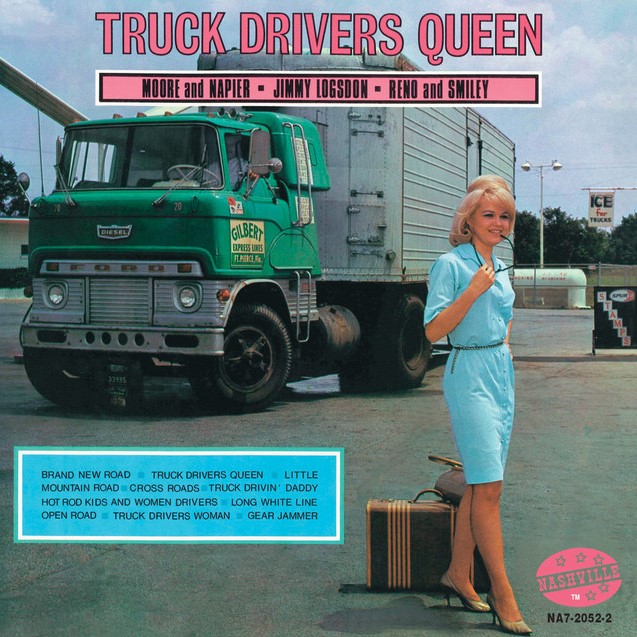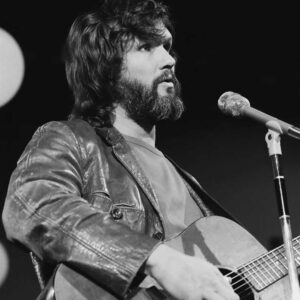Just a few decades ago folks referred to almost any type of country music as “hillbilly” — a genre known primarily as bluegrass among music historians. When rock ’n’ roll came along and influenced country music, what came about was “rockabilly.”
Now, you’ll hardly find bluegrass undertones in Jerry Lee Lewis’ or Carl Perkins’ rockabilly records, but the fact that the two played rockabilly music back in the 1950s and 1960s stands as proof that, to the average Joe, the two terms were interchangeable.
Then again, some bluegrass music is pure hillbilly, and a few artists carried the unamplified strings into topics other than skinning mules or living in Appalachia. Charlie Moore, along with his instrumental partner, Bill Napier, did just that during the mid-1960s.
Moore was born in 1935 in Piedmont, South Carolina. He learned to play guitar growing up, and primarily performed gospel bluegrass in local churches. Moore didn’t perform professionally until 1956, when he joined Cousin Wilbur Westbrooks’ Asheville, North Carolina show. The gig didn’t last long, and a year later Moore was back in South Carolina where he formed The Dixie Partners bluegrass band. Soon, Moore showcased his baritone vocals on a gospel bluegrass show he hosted in Spartanburg, South Carolina.
By 1962, he had joined forces with instrumentalist Bill Napier, a West Virginian and former Stanley Brothers sidekick. With the addition of Napier, The Dixie Partners grew in popularity. Over the next five years, Moore, Napier and the band recorded nine albums for the King label. In fact, during their first recording session with King, Moore and Napier turned out what would become one of their most popular songs: “Truck Driver’s Queen.”
“Truck Driver’s Queen” was the first in a long discography that included an emphasis on truck driving songs. “Lonesome Truck Driver” and “Georgia Bound” are two of Moore and Napier’s early recordings that enjoyed continued popularity throughout the duo’s career recording together.
Moore and Napier primarily played out of Panama City, Florida, where they appeared on a number of television shows. In fact, it was said the duo had a “monopoly on live entertainment” in the Florida Panhandle.
A humble Moore complained that the gig wasn’t as good as it seemed — half the signal covered a swamp and the rest the Gulf of Mexico, he said. But they remained popular in the area, eventually moving their show to Pensacola, Florida, where they enjoyed some of their most successful years. The two also appeared regularly in Wheeling, West Virginia, on WWVA, home of the “World’s Original Jamboree.”
While the duo did experience commercial success and Moore was said to have the best voice in bluegrass, the addition of Napier did not come without controversy. After all, Moore had formed The Dixie Partners before Napier’s arrival. Napier, an apparent prodigy on the guitar, mandolin and banjo, soon overshadowed the rest of the band. Some critics claimed that since he couldn’t play all three instruments at once, whatever instrumental he played dominated fellow band members. Still, without Napier, it is questionable if Moore would have ever achieved the level of success that led him to continue The Dixie Partners after Napier moved on.
“Truck Driver’s Queen,” featuring a heavy dose of Napier on acoustic guitar, is typical of bluegrass (and most country songs) of its time. Just over two minutes long, the lyrics waste no time getting to the point.
First, as The Dixie Partners name suggests, Moore narrates as a truck driver running in the heart of Dixie, from the Carolinas to Alabama. Along the way he’s seen plenty of pretty women, but he’s never been tempted. After all, he sings, none are “as sweet as mine.”
And like Dave Dudley in “Six Days on the Road,” the truck driver has no intention of stopping for pastimes like shooting pinball or worrying about radar guns along his way. He’s “gotta keep these big wheels rolling” because he’s heading home, where he’ll rejoin his truck driver’s queen. In the second verse, Moore gives the listener a vocal glimpse into the beauty of his girl back home. In short, she’s “the sweetest ever seen, with big blue eyes that sparkle” — all the makings of a truck driver’s dream. And that, in short, is what Moore and Napier have to offer with their debut single.
After Moore and Napier parted ways in 1967, The Dixie Partners went on to record 10 albums during the 1970s under the Old Homestead label. However, they never found the same success they had with Napier. Moore and Napier did get together for a reunion album, but Moore’s greatest successes during the second half of his career came in Europe, where he recorded live albums in Belgium and The Netherlands.
Moore struggled with alcoholism for much of his life. Just after Thanksgiving in 1979, his health failing, Moore’s band members checked him into a West Virginia hospital. He died there, just a few days before Christmas.
As for Napier, his time with Moore was the highlight of an impressive career as an instrumentalist. By 1970, he had semi-retired to Detroit, but he made occasional appearances in recordings and on stage. He continued to perform during the 1980s and 1990s; in fact, in 1984 he recorded his only solo album with Old Homestead. He also played the stage with his wife, Carla Napier, fairly frequently. Napier was still performing when he died in 2000, having outlived his former singing partner by more than 20 years.
Until next time, if you’re going to keep those wheels rolling fast, make sure you’re doing it for a good reason. Getting home to your own truck driver’s queen (or king) might be the best motivation.
Since retiring from a career as an outdoor recreation professional from the State of Arkansas, Kris Rutherford has worked as a freelance writer and, with his wife, owns and publishes a small Northeast Texas newspaper, The Roxton Progress. Kris has worked as a ghostwriter and editor and has authored seven books of his own. He became interested in the trucking industry as a child in the 1970s when his family traveled the interstates twice a year between their home in Maine and their native Texas. He has been a classic country music enthusiast since the age of nine when he developed a special interest in trucking songs.







